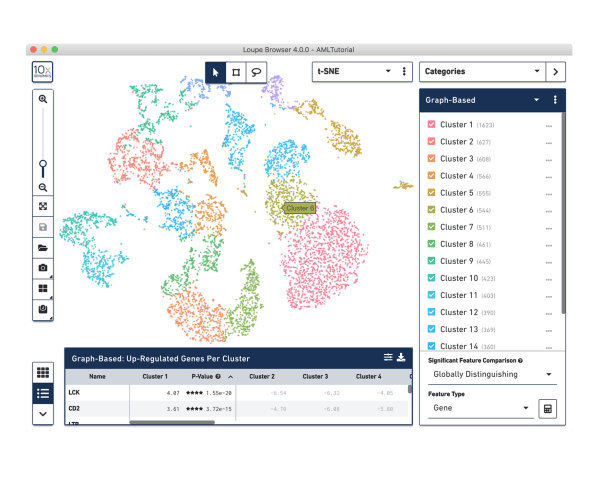

The second part of this tutorial also has a one-click solution to producing a matrix identical to that given by the Cell Ranger pipeline, but the more interesting aspects of the pipeline are explored in the Introspective Method part of the tutorial. Notice the order of magnitude speed up that STARsolo and a few others display, for a variety of different datasets in comparison to Cell Ranger. Since STARsolo is a drop-in solution to the Cell Ranger pipeline, the first part of the tutorial is a one-click solution where users are encouraged to launch their RNA STARsolo jobs and spend the time familiarising themselves with the pre-processing training materials mentioned above.ĭetails: Benchmark of Cell Ranger to others Figure 4: Benchmark of different mapping software. However, those who are more interested in learning the intricacies of how FASTQ files are transformed into a count matrix, please see the Pre-processing of Single-Cell RNA Data tutorial.ġ0x Genomics has its own processing pipeline, Cell Ranger to process the scRNA-seq outputs it produces, but this process requires much configuration to run and is significantly slower than other mappers. The first part of this tutorial is essentially a one-click “fire and forget” solution to demultiplexing and quantifying scRNA-seq data, where much of the complexity required in this extremely crucial stage is simplified into a single step. Performing the Demultiplexing and Quantification.Though there are approximately 3 million 10x gel barcodes used, the amount actually qualitatively profiled in a sample is ~10,000 due to majority of droplets (>90%) being empty in order to ensure that the remainder contains only one cell. The oil is then removed and all (now barcoded) cDNA reads are pooled together to be sequenced.

The cells are then isolated from one another within thousands of nanoliter droplets, where each droplet described by a unique 10x barcode that all reads in that droplet are associated with once they undergo reverse-transcription (RT) which reconstructs the mRNA into a cDNA counterpart.

The individual gel barcodes are delivered to each cell via flow-cytometry, where each cell is fed single-file along a liquid tube and tagged with a 10X gel bead. The 10X barcoded gel beads consist of a pool barcodes which are used to separately index each cell’s transcriptome. Library Preparation Figure 2: An overview of the library preparation The gain in resolution reduces the granularity and noise issues that plagued the field of scRNA-seq not long ago, where now individual clusters are much easier to decipher due to the added stability added by this gain in information. Figure 1: From less than 1K to over 10K with 10x genomics: Analyses of two separate scRNA datasets using the (left) CelSEQ2 protocol, and the (right) 10x Chromium system. Era of 10x Genomicsġ0x genomics has provided not only a cost-effective high-throughput solution to understanding sample heterogeneity at the individual cell level, but has defined the standards of the field that many downstream analysis packages are now scrambling to accommodate. The uncertainty from the low coverage and low cell numbers per sample that once were common setbacks in the field are overcome by 10x Genomics which provides high-throughput solutions which are quickly championing the field. The analysis requires a great deal of knowledge about statistics, wet-lab protocols, and some machine learning due to variability and sparseness of the data. The cellular resolution and genome wide scope make it possible to draw new conclusions that are not otherwise possible with bulk RNA-seq. Single-cell RNA-seq analysis is a rapidly evolving field at the forefront of transcriptomic research, used in high-throughput developmental studies and rare transcript studies to examine cell heterogeneity within a populations of cells.


 0 kommentar(er)
0 kommentar(er)
